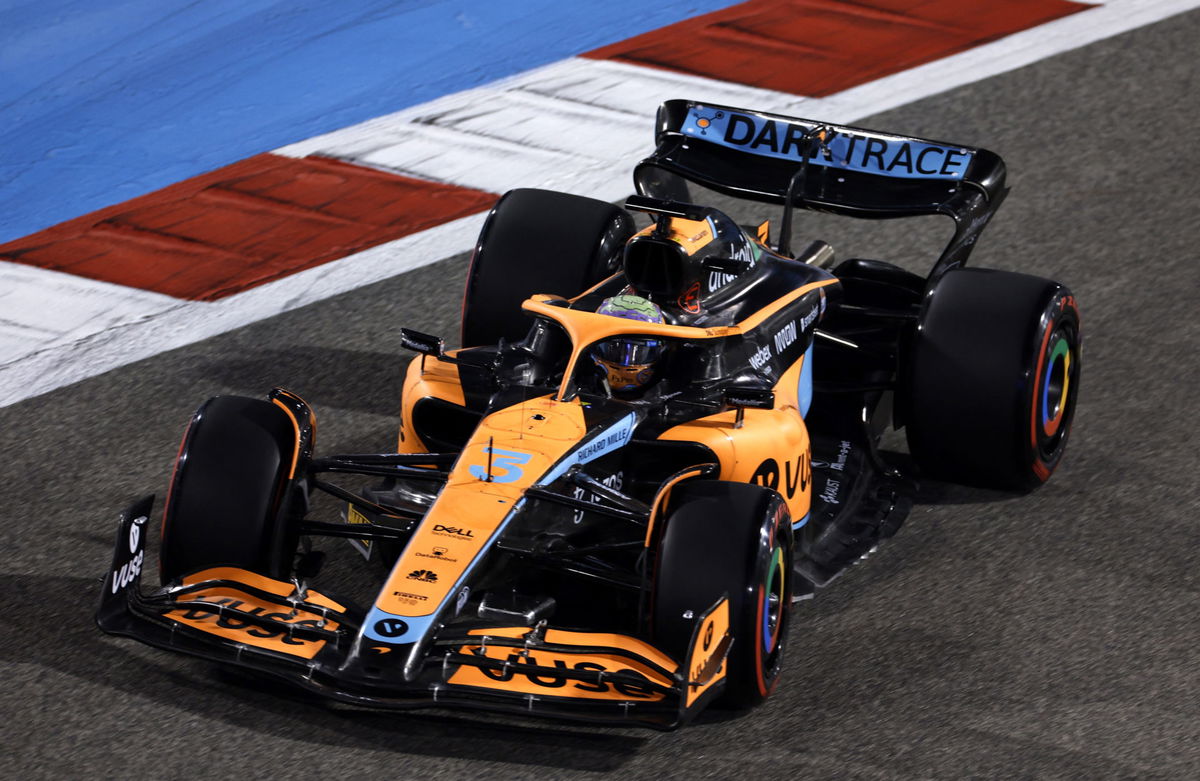
Reuters
Formula One F1 – Bahrain Grand Prix – Bahrain International Circuit, Sakhir, Bahrain – March 19, 2022 McLaren’s Daniel Ricciardo during qualifying REUTERS/Hamad I Mohammed

Reuters
Formula One F1 – Bahrain Grand Prix – Bahrain International Circuit, Sakhir, Bahrain – March 19, 2022 McLaren’s Daniel Ricciardo during qualifying REUTERS/Hamad I Mohammed
Formula 1 is known for its advanced technology. As years have gone by, the teams have adapted to new innovations and technologies that make racing better and, most importantly, safer. The teams usually aim to make the cars lighter, quicker, and more efficient.
Watch What’s Trending Now!
ADVERTISEMENT
As F1 cars go past us in a blink of an eye, the drivers are naturally prone to accidents. At that speed, any accidents caused are fatal. With safety in mind, McLaren introduced a game-changing model in 1981 that changed the sport ever since.
The unveiling of the MP4/1 in 1981 changed how racing teams thought about carbon composite materials. McLaren was one of the first to incorporate carbon fiber into a car’s chassis, and, as a result, it dominated F1 races for years. Nowadays, you can find carbon fiber in an F1 car everywhere – from wings to sidepods.
ADVERTISEMENT
Lightweight, high strength, high-temperature resistance, and high stiffness are some benefits that it offers F1 cars. Carbon fiber is unique in the material world. It’s strong, and only half as dense as steel. It stands up to heat much better than aluminum, and doesn’t corrode like magnesium or oxidize like titanium – it just simply stays carbon fiber!
Carbon fiber is just plain black in color, so F1 teams use coatings of paint on it to showcase its livery. With changes in regulations in 2022, many teams are stripping the paint from the car. However, a solution in the form of colorized carbon fiber has emerged, much to the relief of F1 teams.
ADVERTISEMENT
The McLaren – AkzoNobel partnership
Akzo Nobel is one of world’s largest coating company who are in partnership with McLaren since 2008. The coating over the car’s bodywork adds to the weight of the car as well. As Formula 1 cars are all about speed, any excess weight is, of course, a problem. However, back in 2018, Akzo Nobel came up with a sustainable coating model to make the coating lighter.
Read More: F1 Tech: How Driver’s Helmet Cam Has Evolved Over the Years
ADVERTISEMENT
The innovative coating technology by the company reduced the weight of the paint of MCL33 significantly and decreased processing time by over 50 percent. AkzoNobel’s new paint systems brought together the latest UV curing technologies, super-fast clear coats, and water-based color coats to offer several benefits.
Top Stories
Max Verstappen’s Siblings: Everything We Know About Victoria, Blue Jaye, Jason Jaxx, and Mila Faye

“Filthy Games Were Played”: Helmut Marko Buries Christian Horner for Conspiring Against Him

Despite Shocking Breakup With Charles Leclerc, Ex GF Still Shares Close Ties With Ferrari

Are Max Verstappen’s Parents Separated? Everything to Know About His Difficult Childhood

Who Is Oscar Piastri’s Father, Chris Piastri? Co-Founder of Multibillion Dollar Automotive Company

Our #MCL33 takes to the track for the very first time. 😍
For everything you need to know about our car, head over to #TEAMStream: https://t.co/6EYoGHxhf1 #BeBrave pic.twitter.com/fIAJ4OikaN— McLaren (@McLarenF1) February 23, 2018
However, with changes in regulation in 2022, teams, including McLaren, are stripping the paint to reduce weight. The black carbon fiber in their liveries was visible in the Emilia Romagna Grand Prix.
ADVERTISEMENT
Why are teams stripping paint off?
The advent of new regulations for F1 cars from 2022 has placed increased importance on the weight. With the introduction of larger wheels as well, the teams are struggling to get down to the minimum weight (798 kg). To provide context, for every excess of 10 kg, the car loses 0.3 seconds per lap.

Reuters
Formula One F1 – Emilia Romagna Grand Prix – Autodromo Enzo e Dino Ferrari, Imola, Italy – April 23, 2022 McLaren’s Daniel Ricciardo in action during the sprint race REUTERS/Jennifer Lorenzini
McLaren has once again innovatively stripped off paint and maintained sponsorships. Their partnership with google also helped McLaren to reduce the car’s weight. “Our engine cover was initially papaya but that was before we landed Google as a partner. We took the opportunity: “Hey, you want black? Fantastic’,” said McLaren CEO Zak Brown.
ADVERTISEMENT
According to Alfa Romeo team manager Beat Zehnder, the weight of the paint in an F1 car is 6kgs. AkzoNobel also revealed the car could have a total of over eight square meters of painted surface.
ADVERTISEMENT
Is there a solution for this?
After seven years of extensive research, Hypetex, a carbon fibre manufacturing company, came up with a solution in the form of colorized carbon fiber. F1 teams are always looking for solutions to reduce the weight of the car. Hence, this is excellent news for the teams.
Hypetex has developed, patented and trademarked a process that atomically changes the color of carbon fiber throughout its structure. In other words, it is not simply a layer of paint on the carbon fiber in an F1 car. The result could be a more luxurious look that is topped off with the outstanding impact strength of carbon fiber.
Is this the future of @F1 #livery #design!?@ScarbsTech tweeted about colourised carbon fibre, and it got me thinking…would teams use it as the dominant colour in a car?
An @Oracle @redbullracing #F12022 #Livery #Concept with colourised carbon.@jp1_design in future maybe? pic.twitter.com/1cTsyD7CI4
— Chris Paul Design (@ChrisPaulDesig1) April 27, 2022
ADVERTISEMENT
Marc Cohen, CEO of GPF One, said, “Following the development of Hypetex there are now even more reasons for industries across the world to use carbon fibre. Not only does it maintain the high performance properties of current carbon fibre, but with Hypetex it now looks stunning too.”
WATCH THIS STORY: How Much Does an F1 Car Cost?
From McLaren using carbon fiber in an F1 car in 1981 to Hypetex’s colorized carbon fiber, Formula 1 has always been a ground for innovation. We are excited to see new and upcoming innovations and technologies in the future, without a doubt.
ADVERTISEMENT
ADVERTISEMENT
ADVERTISEMENT

